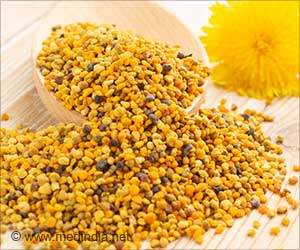Such inks are usually soft and delicate, making it a challenge to retain the final product’s desired 3D shape and structure as the bioprinter deposits the ink layer by layer.
‘Pollen based ink can be a potential alternative material to current bioprinting inks.’
The most widely used bioprinting method today is extrusion-based bioprinting, in which inks are dispensed continuously from nozzles and deposited along digitally defined paths to fabricate 3D structures layer by layer.
One of the challenges of this method is the difficulty in retaining the 3D structures and shapes of soft delicate materials like hydrogels, cells, and biopolymers without additional support.
A structure called a supporting matrix, within which the soft ink is deposited during the printing process, is typically used. However, this creates waste since the supporting matrix becomes unusable after printing.
To overcome this, they developed pollen-based hybrid ink by incubating tough sunflower pollen in an alkaline solution, an environmentally-friendly process similar to soapmaking for six hours to form pollen microgel particles.
The pollen microgel is then mixed with hydrogels such as alginate, a naturally occurring polymer typically obtained from brown seaweed, or hyaluronic acid, a clear, gooey substance naturally produced by the body, to form the final pollen-hydrogel hybrid ink.
As a proof-of-concept, the scientists printed a five-layer tissue engineering scaffold, useful for culturing cells, in 12 minutes. Collagen was then added to the scaffold to provide anchor points the cells can adhere to and grow.
Scientists then seeded human cells on the scaffold and found it to have a high cell-seeding efficiency of 96 per cent to 97 per cent.
To test the feasibility of their approach, scientists fabricated a 3D printed silicon rubber mesh for the elbow using pollen microgel as the support that would retain the elbow mesh’s shape as it is being printed.
After curing the printed product at 75°C (167°F) for 24 hours inside the pollen microgel, the scientists found that the printed 3D silicone rubber mesh could adapt to the human elbow curvature.
They also found that the mechanical properties of the silicone rubber samples printed and cured in the pollen microgel supporting matrix were similar to those of samples fabricated via the traditional casting method.
These findings suggest that we can repurpose pollen grains, a natural renewable resource, into a building block for various eco-friendly alternative materials, from eco-friendly paper to biodegradable sponges that can soak up oil pollutants.
Source: Medindia



